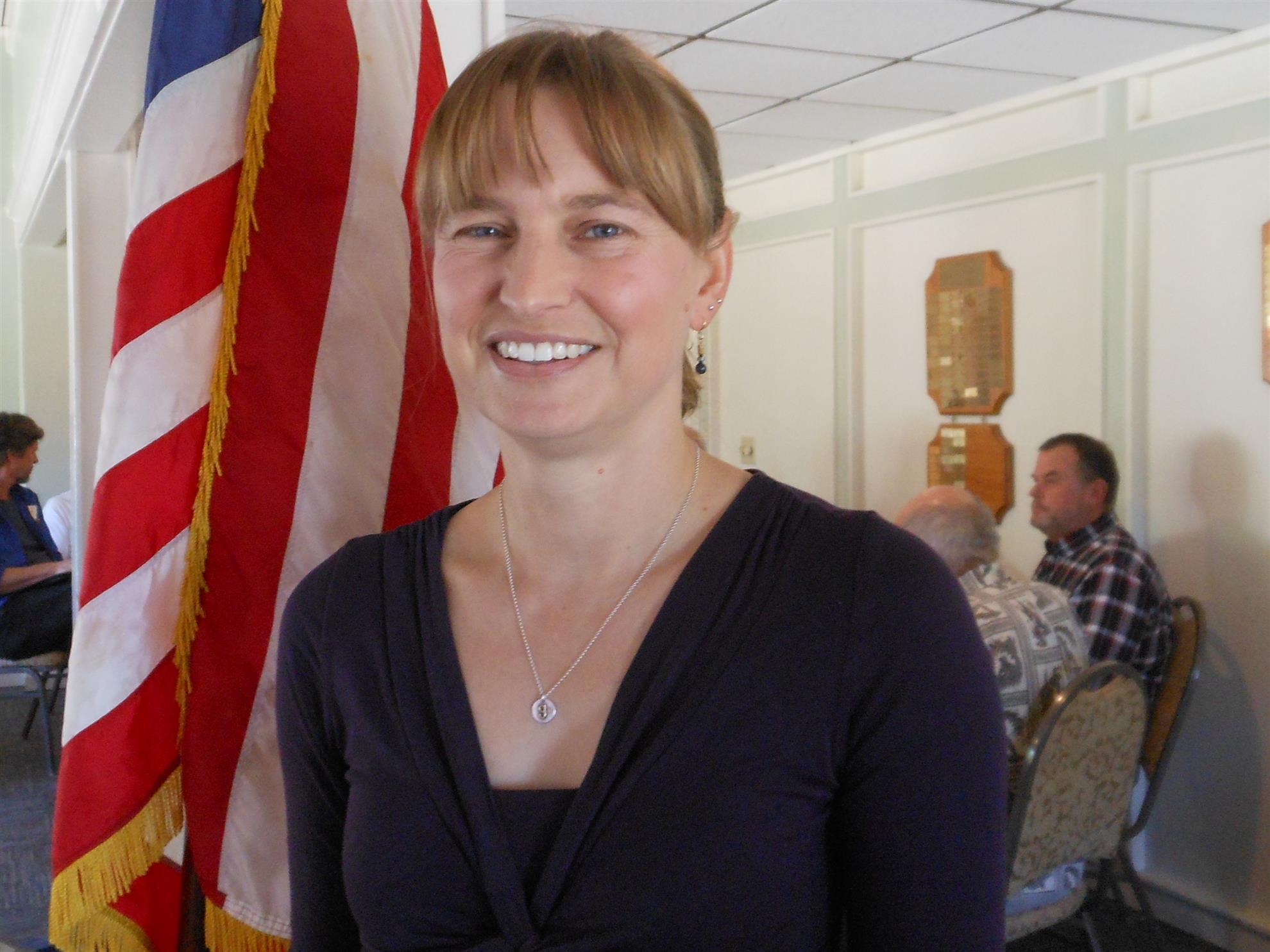Announcements and Reminders
Becky Peters reminded us of the Aptos Chamber dinner honoring our own Doug Deaver as man of the year. It will be Oct 27th at Aptos Seascape. Ticket cost is $85.
October 7th at 7:30 am will be the annual second harvest barrel wrap. Contact Doug Deaver for more information.
Dr. Art will be providing flu shots to club members during October. For a shot, stay after the meeting.

Club congratulations to Dr. Art Dover (see above) on receiving the major donor level 3 award, the first one in our club from the major gift officer for Zone 26. We also found that our club has contributed over $500,000 to polio plus!

Today Amy East, Ph.D. (pictured above) spoke to us talk dam removal. She is with USGS, providing earth science information to the public. Her specialty is in rivers. Entitled Dam and Blast, she spoke about watersheds and restoring rivers by removing dams.
There are many issue in dam removal. Due to aging infrastructure many dams are impaired. There are 1-3 billion tons of carbon sequestration in reservoirs. Most our large dam were built in the early to mid-1900’s to control floods and restore rivers. Dams affect water temperature and trap material that would move downstream. It affects many different fish and water creatures.
Dr. East highlighted two dam removals; one on the Elwha river in Washington and one right here in Carmel river. She asked how can we tell that we’re going to go more good than harm? We know very little about what happens to a river when you take out a dam.
On the Elwha river in Olympic National Park, tribes wanted their creation site back as well as salmon migration unimpeded. They did it stages and included two dams. By the summer of 2014 it was just a river again. More sediment moved downstream then they expected. Most of the effect happened in the first two years. Big coarse particles eventually were covered up and wood appeared, both of which salmon love. The river ended up a foot higher then it used to be and the river mouth became bigger. They found that 90% of the sediment made it to the river mouth. The salmon population recovered after 5 years and made it to the national park for the first time in over 100 years.
She ended by talking about the San Clemente dam on the Carmel river. In 2015 because the river was full of sediment it was taken down for safety reasons. The endangered run of steelhead salmon was restored. This was the only example that was followed by floods and that caused problems. However, now it looks like a healthy river.
What can we do here? Reduce pollution and don’t remove trees in streams.